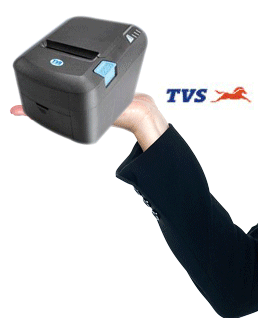Electronic Article Surveillance, Anti-Theft System, Call - 09810822688
Published on: 07 Jan, 2019 | 06:53:01 PM
STOP SHOPLIFTING CONTACT
MINDWARE
Electronic Article Surveillance
Electronic Article Surveillance (EAS) is a technological method for preventing an anti-shoplifting system so that you can focus on your customers and not have to worry about a thief or shoplifter walking out with displayed merchandise in your showroom or shop without paying. The EAS Antennas are a pair of Transmitter and Receivers based on Radio Frequency or RF which work by creating low frequency Electromagnetic Field around it.
How it Works?
The EAS System works by attaching a Tag or Label to the displayed merchandise. These tags or labels are removed or deactivated by the clerks when the item is properly bought or checked out. At the exits of the store, a detection system sounds an alarm or otherwise alerts the staff when it senses active tags. Some stores also have detection systems at the entrance to the restrooms that sound an alarm if someone tries to take unpaid merchandise with them into the restroom.
Types of EAS
There are several major types of electronic article surveillance systems:
- Electro-Magnetic, also known as magneto-harmonic
- Acousto-magnetic, also known as magnetostrictive
- Radio Frequency (8.2 MHz)
- Microwave
Electro-magnetic systems (EM)
These tags are made of a strip of amorphous metal (metglas) which has a very low magnetic saturation value.
Except for permanent tags, this strip is also lined with a strip of ferromagnetic material with a moderate coercive field (magnetic "hardness"). Detection is achieved by sensing harmonics and sum or difference signals generated by the non-linear magnetic response of the material under a mixture of low-frequency (in the 10 Hz to 1000 Hz range) magnetic fields.
This system is suitable for items in libraries since the tags can be deactivated when items are borrowed and re-activated upon return. It is also suitable for merchandise in retail stores, due to the small size and very low cost of the tags (Tattle-Tape).
Acousto-magnetic systems (AM)
They are made of two strips: a strip of Magnetostrictive, ferromagnetic amorphous metal and a strip of a magnetically semi-hard metallic strip, which is used as a biasing magnet (to increase signal strength) and to allow deactivation. These strips are not bound together but free to oscillate mechanically.
The detectors for such tags emit periodic tonal bursts at about 58 kHz, the same as the resonance frequency of the amorphous strips. This causes the strip to vibrate longitudinally by magnetostriction, and it continues to oscillate after the burst is over. The vibration causes a change in magnetization in the amorphous strip, which induces an AC voltage in the receiver antenna. If this signal meets the required parameters (correct frequency, repetition, etc.), the alarm is activated.
this type of tag is often attached to the inside of a plastic surround permanently attached to the power cords of hand tools and equipment
Radio frequency systems
These tags are essentially an LC tank circuit (L for inductor, C for capacitator) that has a resonance peak anywhere from 1.75 MHz to 9.5 MHz. The standard frequency for retail use is 8.2 MHz. Sensing is achieved by sweeping around the resonant frequency and detecting the dip.
Deactivation for 8.2 MHz label tags is typically achieved using a deactivation pad. In the absence of such a device, labels can be rendered inactive by punching a hole, or by covering the circuit with a metallic label, a "detuner". The deactivation pad functions by partially destroying the capacitor. Though this sounds violent, in reality, both the process and the result are unnoticeable to the naked eye. The deactivator causes a micro short circuit in the label. This is done by submitting the tag to a strong electromagnetic field at the resonant frequency, which induces voltages exceeding the capacitor's breakdown voltage.
Microwave systems
These permanent tags are made of a non-linear element (a diode) coupled to one microwave and one electrostatic antenna. At the exit, one antenna emits a low-frequency (about 100 kHz) field, and another one emits a microwave field. The tag acts as a mixer re-emitting a combination of signals from both fields. This modulated signal triggers the alarm. These tags are permanent and somewhat costly. They are mostly used in clothing stores and have practically been withdrawn from use.
Detaching
A detacher is used to remove re-usable hard tags. The type of detacher used will depend on the type of tag. There are a variety of detachers available, with the majority using powerful magnets. Any store that uses an anti-shoplifting system and has a detacher should take care to keep it secured such that it cannot be removed. Some detachers actually have security tags inside them, to alert store personnel of them being removed from (or being brought into) the store. With greater frequency stores have metal detectors at the entrance that can warn against the presence of booster bags or illegal detachers.
Electro-magnetic activation and deactivation
Deactivation of magnetic tags is achieved by straightforward magnetization using a strong magnet. Magneto-acoustic tags require demagnetization. However, sticking a powerful magnet on them will bias disposable magnetic tags and prevent resonance in magneto-acoustic tags. Similarly, sticking a piece of metal, such as a large coin on a disposable radio-frequency tag will shield it. Non-disposable tags require stronger magnets or pieces of metal to disable or shield since the strips are inside the casing and thus further away. Deactivation of some EAS tags can trigger signals sent to the cashier alerting them.
Any other question or request for assistant you can Call us directly @ 09810822688 or Mail - gm@indianbarcode.com or visit our office at
MINDWARE
S-4, Plat No. – 7, Pocket – 7, Pankaj Plaza, Near Metro Station, Sector – 12, Dwarka, New Delhi- 78, India



